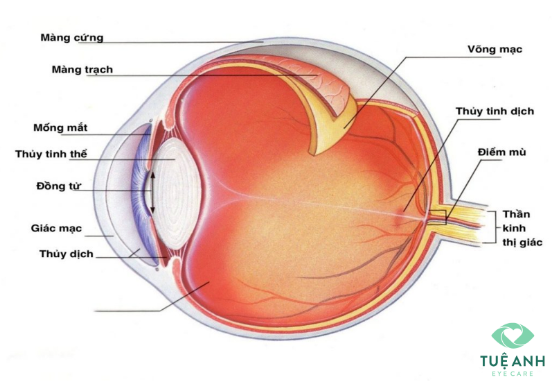RETINAL DETACHMENT - CAUSES AND HOW TO PREVENT IT (PART 2)
Retinal detachment describes an emergency situation in which a thin layer of tissue (the retina) at the back of the eye pulls away from its normal position. The vision process will be cut off and the patient’s vision will be partially or completely blurred depending on the degree of the retinal detachment This is a serious disease in ophthalmology with an emergency nature - if not treated in time, the patient may lose their vision permanently.
Understanding the seriousness of the condition, Tue Anh Health Care has a team of doctors with many years of experience with vitreous and retina. We are ready to examine, consult and directly treat, follow-up for all of our patients. Here, you will have an examination and fundoscopy, so expertise doctors can accurately diagnose retinal detachment and detect retinal tear site, giving proper treatment for you.
In addition, you may have to do an additional ultrasound of the eyeball, which helps examining the retina and other intraocular structures - especially in cases of vitreous hemorrhage.
- Treatment of primary retinal detachment
Surgery is the only treatment for primary retinal detachment. There are 2 main methods of treatment:
- External intervention: Sclerotomy, which means that the surgeon will place a silicone strap around the whole or part of the eyeball's circumference to seal the tear or reduce shrinkage, supporting the retina’ repression.
- Intervention from the inside: vitrectomy, which means that the surgeon will remove the entire volume of vitreous and the fibrous membranes causing the retina to be pulled back, pressurizing the retina with fillers and laser weldings during surgery.
The doctor will decide the procedure for surgery. This depends on the severity and status of your retinal detachment, whether you have had a glass replacement surgery yet and your personal needs.

- Recovery time after retinal detachment surgery
After surgery, it will take at least 2 to 4 weeks for you to recover before returning to normal activity routines.
The affected eye may become red, swollen and painful a few weeks after surgery, but these are part of the eye's healing process. Follow the postoperative instructions of your doctor such as face position, topical medication and body to prevent superinfection and reduce inflammation.
- Taking care of yourself at home
Taking care of yourself is very important after having the surgery. Always remember to schedule a follow-up visit, even if you don't have signs of discomfort or pain after surgery. Keep all documents related to your illness.
You also need to adjust your daily activities:
- Rest: this is important for your eyes and body to recover from the stress and fatigue of surgery.
- Don’t do heavy activities (e.g: carrying heavy loads) or moving quickly, even if they are everyday activities like changing sheets or cleaning the house. Avoid changing the position of the head as much as possible.
- You still need personal hygiene, but avoid getting soap or cleaning solutions in your eyes.
- Wear protective glasses at all times, even indoors, to protect your eyes.
- You can drive if you already had good eyesight, but consult an ophthalmologist before doing so
- Adhere to the prescription
You will need to follow your doctor's prescription exactly. If you are being treated for other medical conditions, it is important to inform your doctor in advance to avoid any complications.

